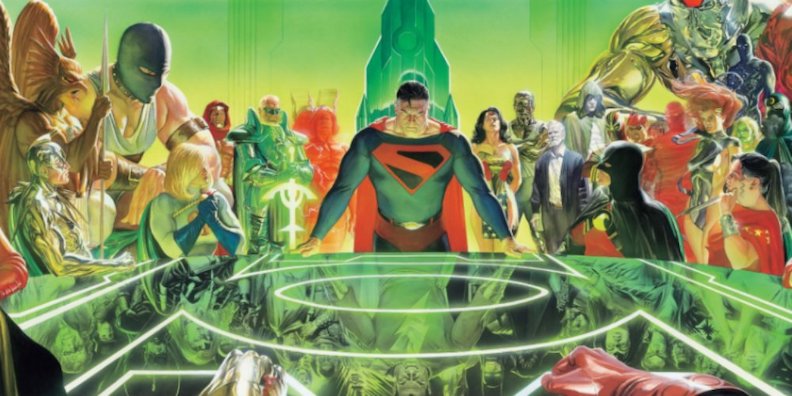On Sunday, the CW debuts the latest ARROWVERSE crossover, a three-part event spanning THE FLASH, ARROW and SUPERGIRL titled “Elseworlds.” Like the previous crossover episodes, the title has its roots in DC Comics’ storied publication history. The crossover title is a nod to a DC Comics imprint that told stories that were (sometimes way) outside of the continuity of the time.
Earlier this week, I looked at a batch of great ELSEWORLDS stories to check out. But there’s always more! Let’s take a look at some more great stories from the bygone DC Comics imprint.
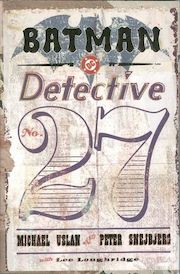
Batman: Detective No. 27 (2003) – There was a period of time when Michael Uslan, the producer of the first batch of Batman movies, had started writing comics for DC, and it was a natural fit for him to work on some stories of the Dark Knight. This original graphic novel, with art from Peter Snejbjerg and Lee Loughridge, was a pretty great contribution. Taking place in 1939, Bruce Wayne never becomes the Batman. Instead, he is enlisted into the Secret Society of Detectives, a group created by Allan Pinkerton to battle the Knights of the Golden Circle, alongside the Crimson Avenger, Alfred Pennyworth and Theodore Roosevelt.
The original story has a lot of fun nods to Batman’s history, including supporting roles for Robin, Catwoman, Babe Ruth, Fiorello Laguardia and even Superman. And the art from Snejbjerg and Lee Loughridge was pretty great, too.
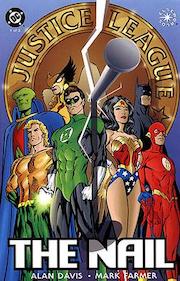
JLA: The Nail (1998) – One of the most highly-regarded ELSEWORLDS titles, THE NAIL was a three issue miniseries written by Alan Grant, detailing a world where Jonathan and Martha Kent’s pickup truck had a flat tire because of a nail in the road that caused them to miss their destiny of finding Kal-El’s rocket ship. So, instead of growing up on a farm in Kansas and becoming the world’s greatest hero, Superman is nowhere to be found in this world, as Metropolis Mayor Lex Luthor, along with Jimmy Olsen and Perry White, go on a campaign to oppose metahumans.
Without Superman’s inspiration and leadership, the Justice League of America is a bit of a mess. Batman kills The Joker after the villain murders Batgirl and Robin. Metamorpho kills The Thinker and Perry White. And Green Arrow becomes an outspoken anti-metahuman activist and conspiracy theorist after he loses the use of his legs. The world clearly needs a Superman. They just need to know where to look.
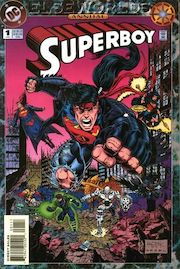
The Super Seven (1994) – In 1994, DC Comics used its Annuals – extra-sized editions of its regular monthly titles – to tell ELSEWORLDS stories for each of their heroes. Of the 23 Elseworlds Annuals published that year, one two-part story stood out as my favorite.
Running in the Annuals for Adventures of Superman (Part 1) and Superboy (Part 2), The Super Seven took place on an Earth that had been captured by aliens a decade ago. The final seven heroes alive team up to try and overthrow their alien captors on the eve of a planet-wide tithe. It’s a great story that manages to give the heroes some very-1990s new costumes. This one definitely deserves a reprint.
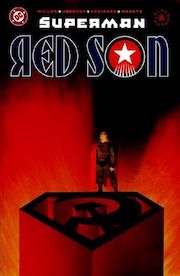
Superman: Red Son (2003) – Here’s a story I’d love to see turned into a DC ANIMATED feature. Writer Mark Millar sends Superman’s rocketship away from Smallville, Kansas and into a farm collective in the Ukraine during the height of the cold war between the United States and the Soviet Union. Instead of fighting for Truth, Justice and the American Way, Kal-El grows up to fight for “Stalin, socialism, and the international expansion of the Warsaw Pact.”
The Soviet Superman turns Russia into the world’s only superpower, as the U.S. falters, while Lex Luthor tries to use his superior intellect to make AMERICA great again. Best of all, the ending of the three-issue Prestige miniseries is one of the greatest mind-twists I’ve ever read in a superhero comic, and it could only come from the brain of either Millar or Grant Morrison.
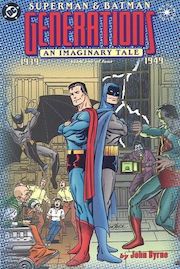
Superman & Batman: Generations (1998-1999) – I’m not usually a fan of later-era John Byrne, but this miniseries (and its sequels) is an exception. The four issue Prestige miniseries’ main conceit is that Superman and Batman debuted in 1938 and 1939 and aged in real time (aided along by some comic book science that would keep them alive well into the 21st Century and beyond).
GENERATIONS manages to bring in a number of different heroes from different eras, showing off how the DC Universe might be different if the heroes aged in real time. In the three sets of GENERATIONS miniseries, Byrne created an entire universe with myriad stories about its two main heroes and all their super-friends, not to mention the children and grandchildren of Superman and Batman.
That’s a wrap for part two of our look at some great ELSEWORLDS stories. What are some of your favorites? Let us know in the comments!
